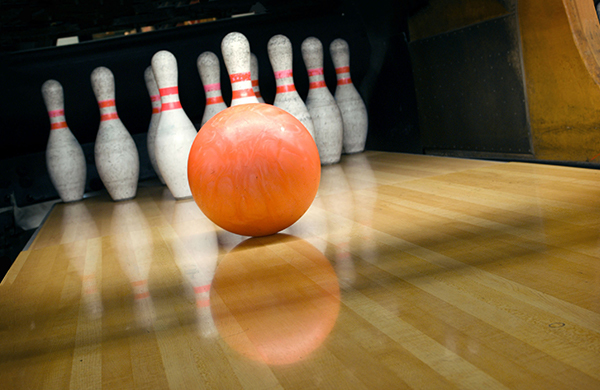Have you ever watched a game of bowling and wondered if there were 12 pins neatly arranged in that familiar triangular formation? Or perhaps, you’ve heard someone mention it in passing, and it’s got you second-guessing your bowling knowledge. Well, folks, it’s time to dive deep, debunk myths, and answer the question you never knew you had – Are there really 12 pins in bowling?

Contents
How Many Pins In A Bowling Game?
In the standard game of bowling that most of us are familiar with, known as tenpins, there are exactly that – 10 pins. You might have been thrown off by the triangle formation, but it’s simply a pyramid of 4 rows adding up to 10. However, if you venture into other variations of the sport, you’ll encounter different numbers.
Why is Ten-Pin Bowling the Most Popular Variation?
- Easy to Learn: Ten-pin bowling is a game enjoyed by all ages and skill levels. Its simple rules make it perfect for family outings, friend gatherings, or corporate events. Just roll the ball and aim to knock down as many pins as possible!
- Accessibility and Availability: Ten-pin bowling is widely available in bowling alleys worldwide. Its equipment and facilities are easily accessible to most people. No matter where you are, there’s likely a ten-pin bowling alley nearby.
- Pop Culture Influence: Ten-pin bowling is prominently featured in movies, TV shows, and video games, adding to its popularity. It’s the go-to choice for many, thanks to its visibility in pop culture.
Why Are There Ten Pins, Not Eleven or Thirteen?
In the late 19th century, nine-pin bowling was incredibly popular but was banned in many states due to its association with gambling and crime.
To get around the ban, an extra pin was added, giving birth to the ten-pin bowling we know and love today. The number of pins stuck, and the game’s popularity soared, eclipsing all other versions. So, while there could theoretically be eleven or thirteen pins, ten-pin bowling has established itself as the norm, and any modification would fundamentally alter the game we’ve come to enjoy.
Different Number of Pins in Bowling Variations
While tenpins are the standard in most bowling alleys, there are indeed games where the number of pins differs.
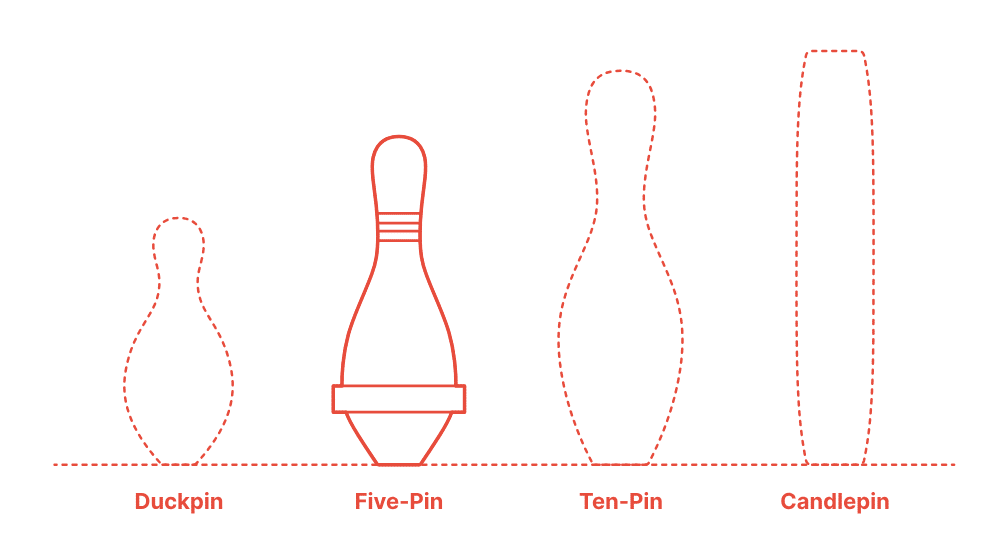
Five-Pin Bowling
The game of five-pin bowling, invented by Thomas F. Ryan in Toronto, Ontario in 1909, uses five pins instead of ten.
Unlike ten-pin bowling, the smaller pins and ball fitting comfortably in the palm of the hand make it a unique Canadian game.
The five pins are arranged in a V shape, each with a different point value. The goal is to knock down as many pins as possible within three throws per frame, adding an exciting layer of strategy to the game.
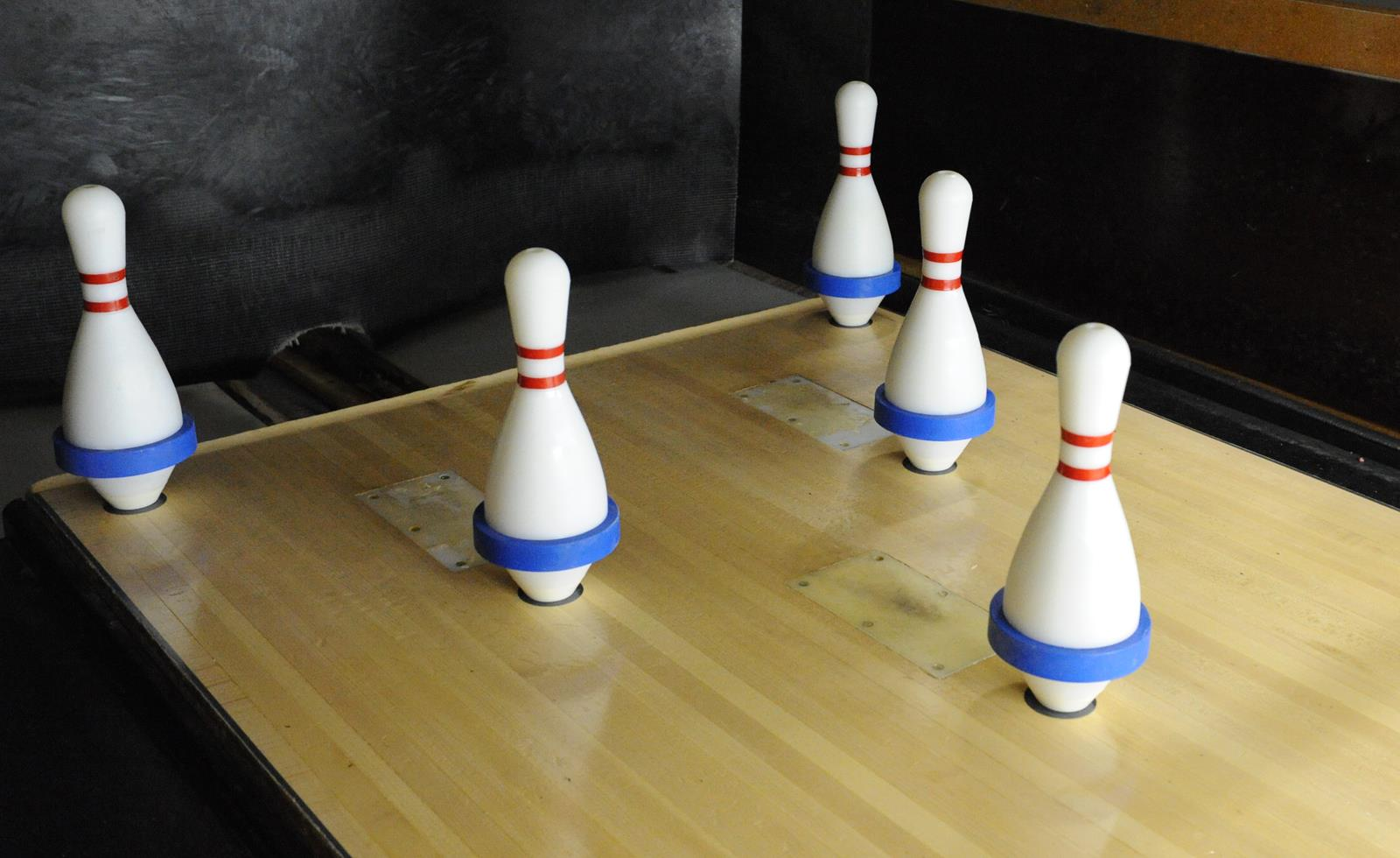
Nine-Pin Bowling
Nine-pin bowling, or “Kegel” in Germany where it originated, is a variation of bowling with a different challenge than its tenpin cousin.
This game features nine pins arranged in a diamond formation, with one pin in the center. It is popular in Europe and has a unique scoring system. The setup differs from tenpin and five-pin games, with pins placed in groups of three. The ball used in nine-pin bowling lacks finger holes.
The goal is to knock down as many pins as possible in two attempts per frame. Scoring involves bowling twice in succession. A “full” is when all nine pins are knocked down with the first ball, while a “räum” is when all remaining pins are knocked down with the second ball.
Nine-pin bowling combines skill, strategy, and luck, offering an interesting variation of the traditional game.
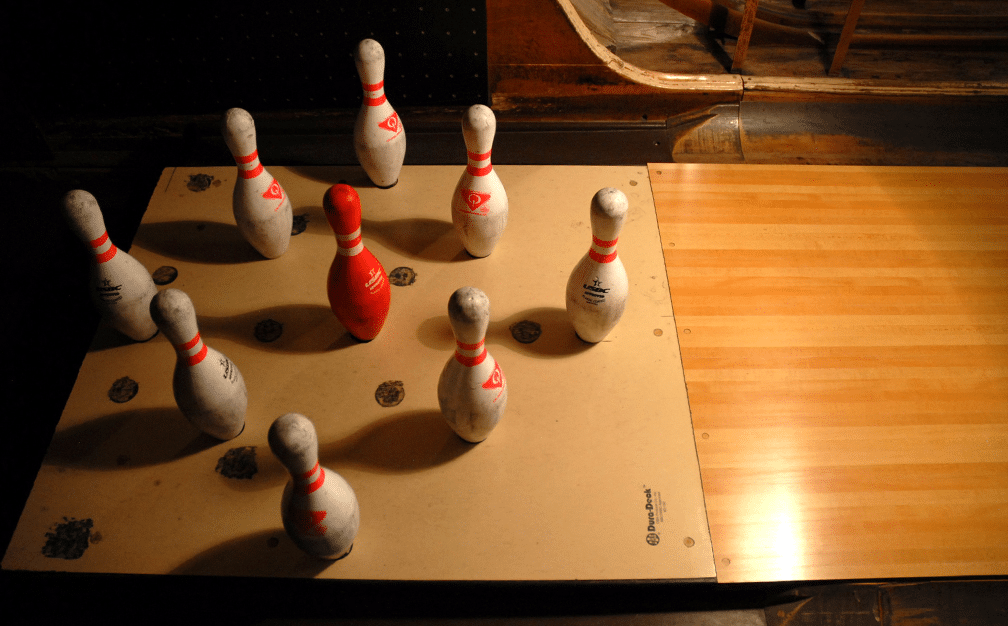
Candlepin Bowling
Candlepin bowling is a variation of bowling primarily played in the Canadian Maritime provinces and the New England states. Thomas J. Dorgan introduced the game in Worcester, Massachusetts, in 1880.
In candlepin bowling, each player uses three balls per frame, unlike tenpins and ninepins.
What makes candlepin bowling unique is the shape and size of the pins and balls. The cylindrical pins, resembling candles, are about 15.75 inches tall.
The balls are smaller, with a maximum weight of 2.7 pounds and a diameter of 4.5 inches.
In candlepin bowling, fallen pins called “deadwood” are not cleared between balls, allowing for strategic play to knock down more pins.
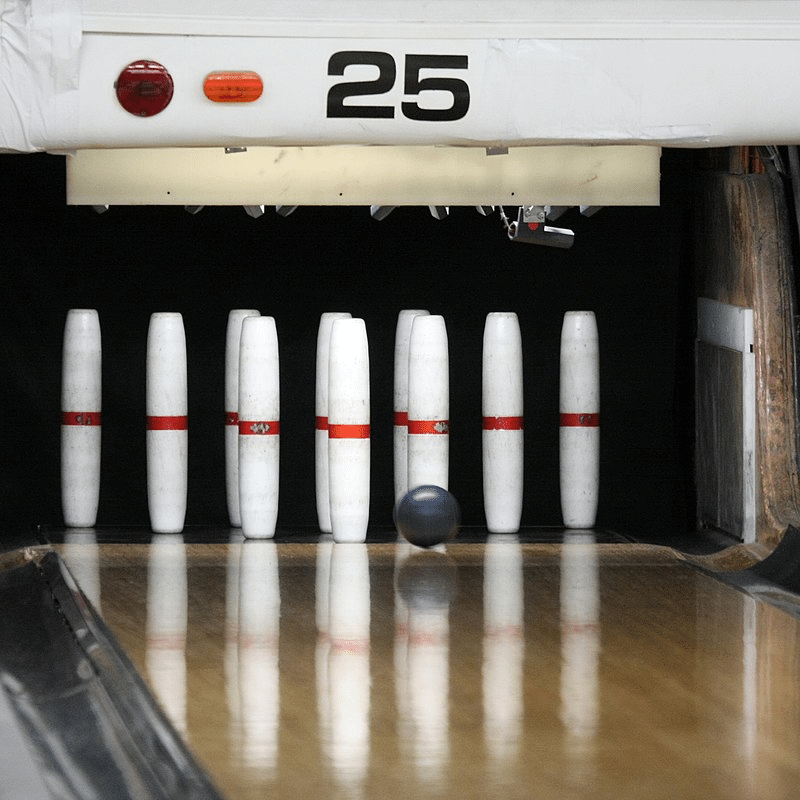
Duckpin Bowling
Duckpin bowling is mainly played on the East Coast of the US. It was developed in 1900 by John J. McGraw and Wilbert Robinson, former baseball players and bowling alley owners.
The name “duckpin” supposedly comes from the way the pins fly when hit, resembling a “flock of flying ducks.”
Duckpin bowling uses a smaller ball than tenpin bowling and has shorter, squatter pins. Like candlepin bowling, each player gets three throws per frame.
Scoring in duckpin bowling is similar to tenpin bowling, but achieving a strike or spare is significantly more challenging due to the smaller pins and balls. This makes high scores in duckpin bowling a noteworthy achievement.
Duckpin bowling offers a unique challenge and twist on the conventional game, making it an enjoyable variation of the sport.
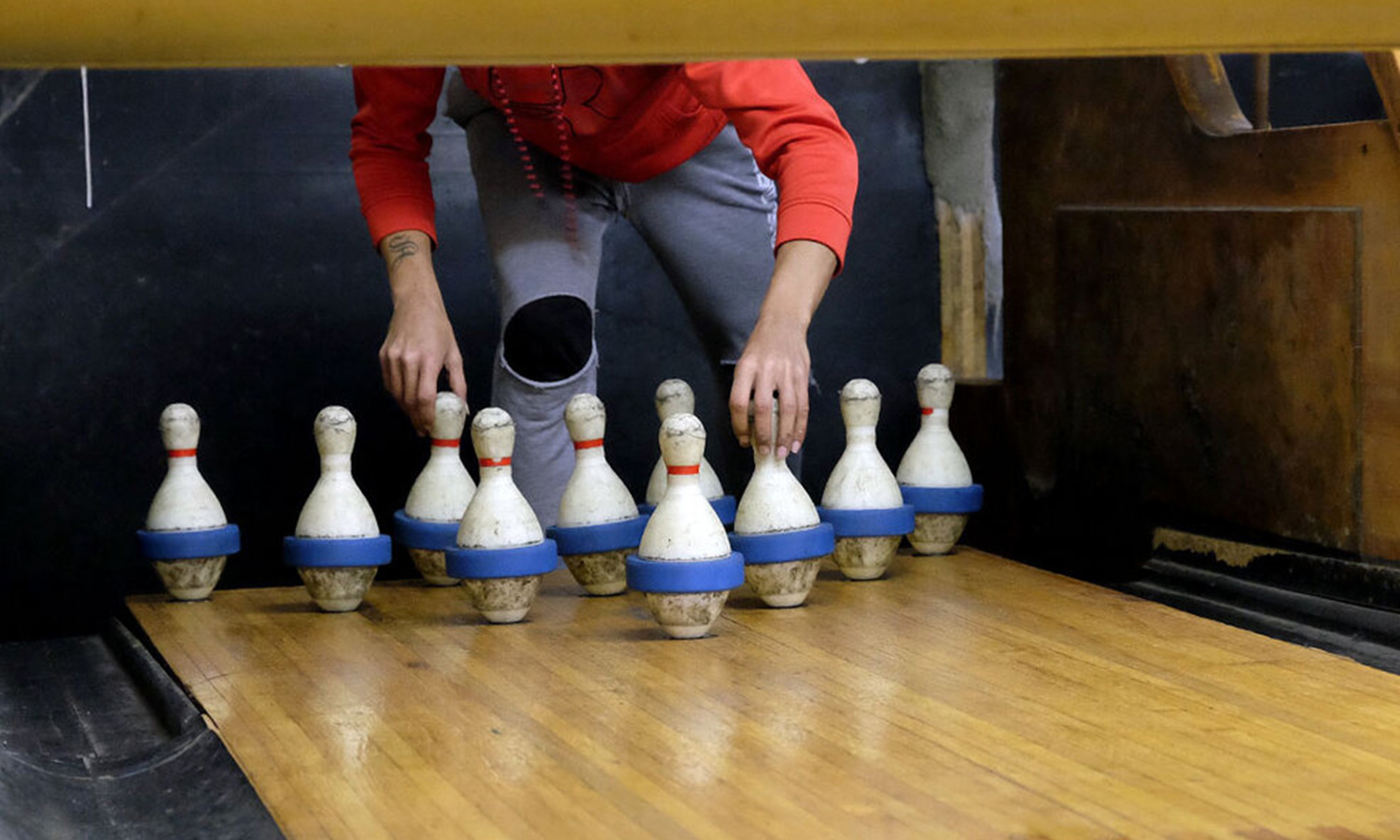
Are There 12 Pins in Bowling?
The short answer is no. There is no recognized version of the sport that utilizes twelve pins. The numbers can vary, but they don’t reach twelve in any of the bowling variations. Whether you’re playing tenpins, ninepins, candlepins, duckpins, or five-pin bowling, you’ll find that the number of pins always stays in the single digits.

Final Thought
Bowling has several variations across the world, each with its unique charm and challenges. While the standard tenpin bowling is the most recognized, you might encounter the strategic five-pin bowling in Canada, the diamond-formation nine-pin bowling in Europe, or the unique candlepin and duckpin bowling in certain parts of the US. However, there is no variant of bowling that uses twelve pins. If you ever stumble upon a claim of a twelve-pin bowling game, you’ve got the facts to debunk that myth right away.

Allow me to introduce myself – I’m Eric Wilkinson, a true bowling aficionado. The world of bowling culture has always fascinated me, and I’ve made the exciting decision to share my passion through writing. As I embark on this blogging adventure, my goal is to provide fellow enthusiasts with valuable insights, tips, and captivating stories. Through my blog, I hope to ignite a deeper appreciation for the sport and foster a sense of community among fellow bowlers. Join me on this thrilling journey as we explore the vibrant world of bowling together.
